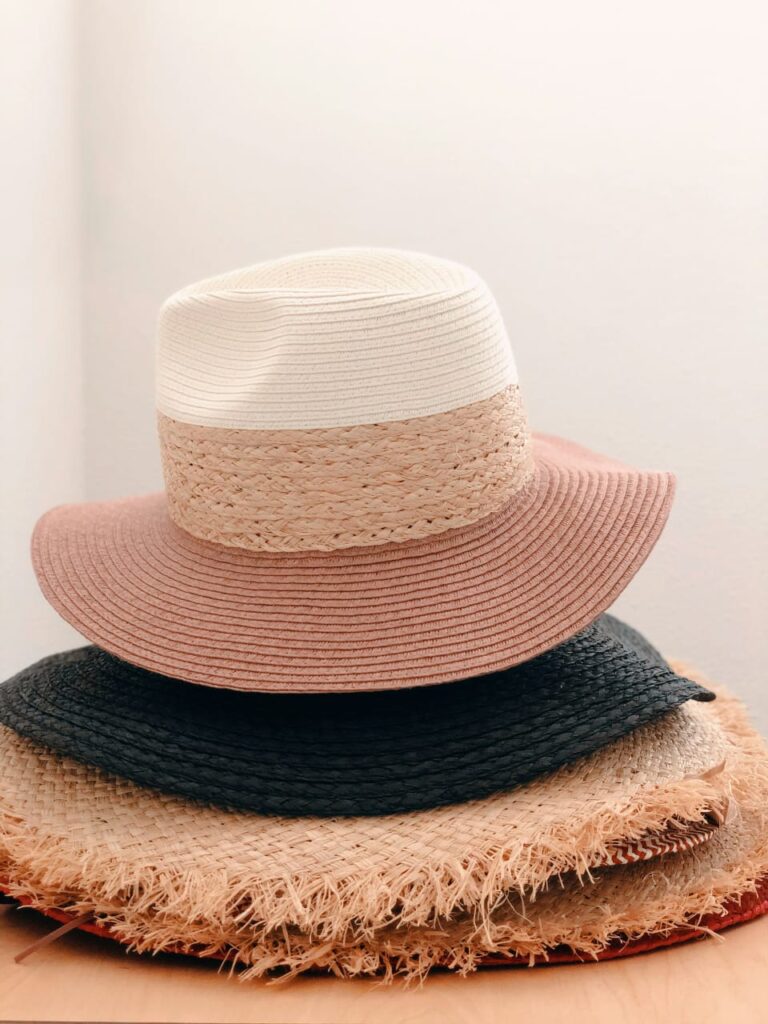The straw sun hat – you have probably seen one at a picnic, on the beach or in a shady garden somewhere – is much more than just a summer accessory. It is a craft that brings together nature and design in a functional, beautiful object. These hats are more than sun protection. They are a story of tradition, sustainability, and craft. The different types of straw each offer their own qualities – raffia, seagrass, and more.
Here’s a bit about each of the materials used to make the best straw hats and why hat-makers and hat-wearers alike treasure them.
Raffia: Gentle and Durable
Raffia is one of the most versatile materials. It is produced from the raffia palm tree, which is native to tropical locations including Madagascar and the Philippines. Raffia fibers are highly pliable and strong, making raffia hats comfortable and sturdy.
Thanks to their delicate, natural tones of beige and amber, the hats have a naturally appealing organic look, and the fiber’s ability to absorb dye allows for a full palette for artistic expression.
Palm Leaves: Timeless Elegance
If you think of exquisite straw hats, you probably think of Panama hats made in Ecuador from toquilla palm leaves. The leaves are split, dried, and handwoven into a thin, airy head covering.
The elegance of the Panama hat is the result of a labor-intensive process that produces something beautiful and useful. The time and skill of the craftsmen are evident in these hats. They are cherished items with a history of elegance.
Seagrass: A Rustic Surprise
Less famous, but no less intriguing, is seagrass, which lends hats a rustic yet sophisticated look. The grass is plucked from the shallow coastal waters and dried before braiding and shaping into hats. Because seagrass hats are water-resistant and durable, they are as functional as they are fashionable and eco-friendly (seagrass usually grows back once harvested).
Bamboo: The Eco-Conscious Choice
With a growth rate of up to one meter per day and ready in six months, bamboo is another popular choice among straw hat makers. Processed bamboo is a fine yarn spun into cloth and then into hats. The resulting straw has a light texture, antimicrobial, and a subtle sheen not far from silk fiber. For eco-conscious consumers, bamboo straw hats are appealing for their minimal environmental impact.
The Art of Hat Crafting
Creating a straw hat is an exercise of tradition and craft. The process can range from entirely hand-woven (as in the case of the Panama hat) to machine-assisted (for more complex patterns). The material chosen informs the body of the hat — raffia is soft and stretchy, palm leaves are more classically refined, seagrass is durable with an element of the pastoral, and bamboo is sleek and sustainable.
What The Top Keynote Speakers Are Doing To Stand Out(Opens in a new browser tab)
Final Reflections on Straw Hat Materials
Straw hats always appear unique and hand-made in an age of mass-produced fashion. The decision to wear a straw hat is driven not only by looking good but also by acknowledging the labor-intensive process that brought each straw to the hat itself. Be it the softness of raffia, the tradition of palm leaves, the organic feel of seagrass, or the green face of bamboo, straw hats are a celebration of the natural world and traditional hat-making craft.
With a straw hat, the wearer is fashionable not just because of what is on their head but also because of their heritage and the rhythm of nature.
